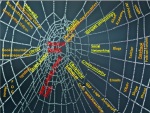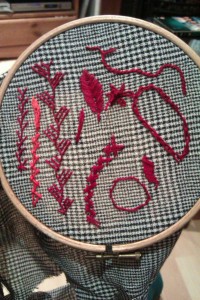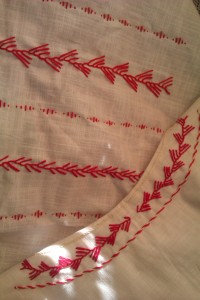- Mike’s updated toolkit
- Sam’s updated toolkit
- Mo’s updated toolkit
Shelly Terrell uses the example of telling students to ask their class neighbour a question. That individual might not know the answer, but if the student asked the whole class someone is sure to know the answer. Using the internet, the world (or at least our own personal learning networks) is the rest of the class. I know plenty of people who use the internet in this way, using Twitter or Facebook to ask a question, and there will always be someone following them who can answer, or at least point them in the right direction. Sometimes I’ve been able to answer the question. Sometimes you get one answer, sometimes you get lots. Sometimes the answers lead to more questions!
Twitter and Facebook are also great ways of developing a PLN – by finding friends of friends or followers of followers who have useful interests. Increasing your PLN increases the chances of getting useful answers (from the rest of the class) when you have a question. But how do you get started? How do you build the foundations of a PLN, if you’re just starting out on the internet? I’ve been socially active on the internet for years, so have an extensive and ever growing (but rarely pruned) learning network, but some of my classmates are completely new to the internet and social networking, so how do they get started? Maybe that’s a question to ask the whole class.
Rheingold’s article and this one on Connectivism both made me think about what’s sometimes known as ‘google-foo’ – the art of knowing how to find exactly what you’re looking for in the vastness of the internet – not know-how or know-who but know-where – knowing where to look. The internet is the rest of the class – it’s the rest of the world. By knowing how to search it, you can find the right person in the class to ask, rather than asking a bunch of people who can’t help. If the question you want to ask in class is about an operating system, it makes more sense just to ask the geeks than to ask the whole class. Our google-foo lets us narrow down our search.
One tenet of Connectivism is that the capacity to learn new things is more important than everything you’ve learned so far. So whatever I learn tomorrow has more value than what I learned yesterday? While I agree that the capacity to take in more knowledge is important, I don’t agree that everything I learn in the future will be more important than what I already know.
Mo thinks that all these researchers keep discussing and debating about the way technology i.e. Internet is affecting our lives as if it is a passing phenomenon. He says the discussion to be had is how to adjust and adapt to this new reality. As the traditional role of teachers and means of communications will be changing gradually in this changing world so we have to adjust and adapt to embracing the technology in general and to work on extracting the positive aspects and resources available, maybe we should then be discussing, researching and communicating and teaching ways of extracting the positive and beneficial information.
Networked Learning
A short time ago I needed to learn to hand embroider (who needs to learn hand embroidery? Me, apparently). So I consulted the internet. A quick google search gave me a good selection of sites and blogs to get me started. Sarah’s Hand Embroidery Tutorials are easy to follow and give a very extensive range of stitches, so quickly became my primary source, but I also used Needle’n’Thread for it’s well explained tutorials and web videos, Pinterest for inspiration, and a few other pages. Some pages weren’t useful at all, as they simply gave images of finished stitches with no instruction at all on how to create them.
I made a sampler following several tutorials, before moving on to embroider my finished pieces. I went from knowing nothing to being confident in several stitches in a fairly short time, all thanks to the internet. I didn’t personally know anyone who could embroider, so I asked the whole class and found several people who could show me how.






